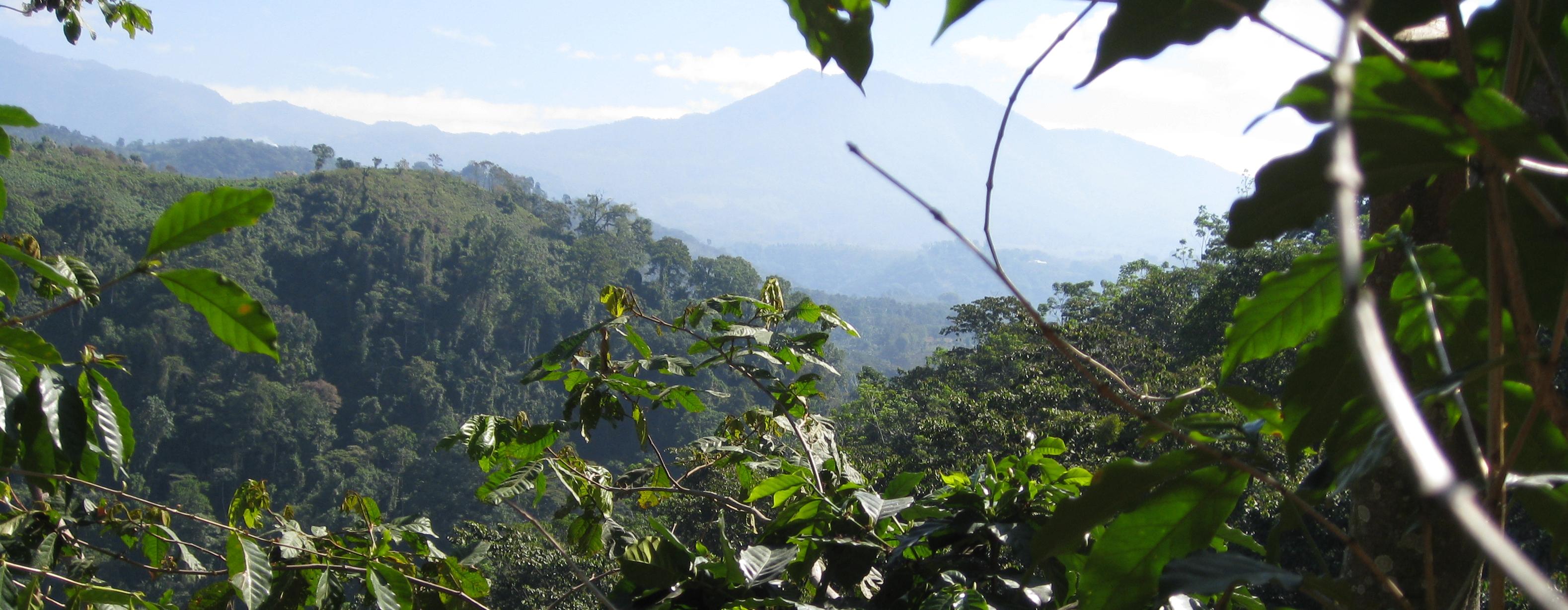- About this Program
- Apply to BUILD
- BUILD en Español
- BUILD Guatemala
- BUILD Guatemala Program Members
- About Santa Anita la Unión
- Caffeine and Capitalism: a Brief History of Guatemalan Coffee
- Reflections from the Field
- Projects in Agriculture and Productivity
- Projects in Ecotourism
- Projects in Technology and Communications
- BUILD India
- Student Research
- Events
- External Links
- Donate
- Contact Us
- News
- Press Clips
- Calendar
- Resources
Building Understanding through International Learning and Development (BUILD)
Caffeine and Capitalism: a Brief History of Guatemalan Coffee

|
|
Some of the highest quality coffee is grown on the volcanic hillsides of the boca costa region (photo by Hillevi Jaegerman, Tufts '11)
By Will Merrow (BUILD '09) Coffee was introduced in 1760 by European settlers, but was not cultivated until forty years later. In the early 1800s, Guatemala’s indigo plantations were devastated by locusts, and fifty years later, the invention of chemical dyes in Europe made indigo production in Guatemala unprofitable. The government began at this time to provide economic incentives to encourage the production of coffee as a commercial good, and in 1859 approximately 400 quintales (quintal=100lb.) of coffee were exported to Europe. In 1860, coffee exports nearly tripled to 1100 quintales, and in 1868 the government instated a program that distributed more than one million seedlings to rural farmers. In the 1870s, president Justo Rufino Barrios enacted a number of policies aimed at making coffee the primary good of the Guatemalan economy, and in 1880, coffee sales made up ninety percent of Guatemala’s exports. Unfortunately, not all Guatemalans benefited from this economic shift, as many indigenous peoples saw their land expropriated to become part of large plantations. BUILD student researcher Mike Niconchuk gives us an historical account of the rise of coffee in the Guatemalan economy and the subsequent changes in the lives of indigenous Guatemalans:
The 1870s ushered in a pivotal period in Guatemalan history, the Great Liberal Reform, which can be partially attributed to the increasing demand for coffee . Before the Liberal Reform, much land that was well-suited for coffee cultivation was still in the hands of the indigenous peoples, who had been allowed to keep their villages, but the 1870s Reform gave the coffee elite the legal mechanisms by which to remove the Maya from these remaining fertile lands . To the Maya, coffee was foreign, but their lives became increasingly tied to its production as the Reform progressed. Crucial to the success of the political campaign to produce more coffee was the support of the national army. Throughout the 1870s the military was dispatched to quell many uprisings and protests on private farms along the volcanic Pacific Coast in today’s Quetzaltenango and Retalhuleu provinces . One of the most active proponents of these reforms, which greatly reduced the quality of life of the Maya, was Justo Rufino Barrios, president from 1873-1885: “Between 1871 and 1883, the Barrios administration sold almost 400,000 hectares of what were deemed ‘public lands’ to coffee planters in the most productive regions of modern Guatemala.” The lands sold by Barrios to private speculators were so large in acreage that small-scale production for indigenous farmers was not possible. Additionally, the ties between government and speculators were so strong that small growers lacked political access . Also, in the 1870s as part of the Liberal Reform, a law was passed that regulated the flow of indigenous labor from highland villages to the coastal coffee farms. This same law also forced all indigenous laborers to carry a labor obligation document . By the end of the Barrios administration, the Maya were essentially property of the state, the national government legislating and regulating their movements. They were means to a capitalist end, for most farm owners: “Through the labor laws and coffee farms, the Maya became increasingly connected with the export economy. They were exploited participants in the world economy dominated by Atlantic capitalism.” Perhaps the most unfortunate irony of the colonial labor system is that the social ideology of the Maya identity did not challenge the clear ethnic division of labor. If anything, the Maya culture supported their role in the region’s agriculture, which is not to say that the Maya supported their exploited status. They simply recognized their historic role as workers and guardians of the land. Increased seasonal labor movement to the coastal farms greatly reduced the time that Maya farmers could work on their increasingly-smaller territories in the highlands. With less time to cultivate family plots, production of less labor intensive crops like corn and beans rose. The monoculture in the highlands began to mirror that of the coffee coast, contributing further to the agricultural and economic divide between the Maya and the colonizers.
Quoted text taken from student research. For full citations, please visit Student Research

